The Land of LegendsRoad trip Delhi - Ahmedabad - Dwaraka - Bet Dwaraka - Gir - Gandhinagar - Porbander - Jamnagar - Morbi - UdaipurTotal No of days - 7Dated - Oct 2011
Home - Travelogues - Visit Saurashtra in Gujarat - What we saw
What We Saw and Info
Ahmedabad
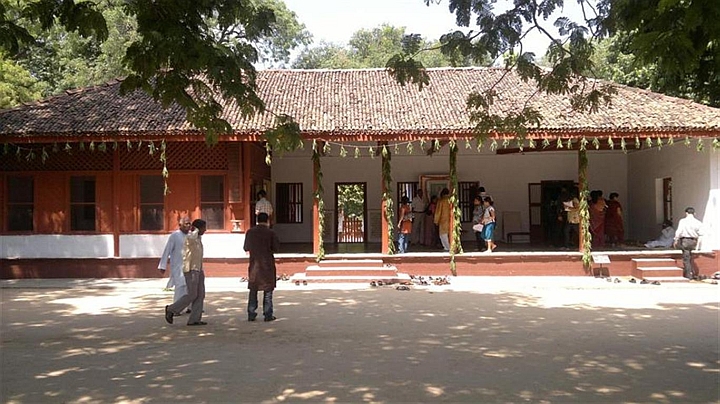
Sabarmati Ashram 6kms was founded by Mahatma Gandhi in 1915 and continues with the ideals set up by him. Hriday Kunj is the hut where Mahatma lived. The other exhibitions show his personal possessions, picture gallery, collection of books, a handicrafts centre. It is from here in 1920 he began his Dandi march against the salt tax imposed by the British. A Sound and light show is held in the evening. Gandhiji started his historic footmarch with 79 ashramites to Dandi recalling Buddha's renunciation of old, with a vow not to return to this place till he acheived freedom of India.
There is the Upasana mandir which is the ashram prayerground. Hridaykunj was Gandhiji's residence from 1918 to 1930, it has Gandhiji's own room, Kasturba;s room and kitchen. Mira Kutir is the residential hut of Sri Vinobhaji and Shri Mirabahen (Miss Slade, daughter of a British Admiral) Khadi Vidyalaya is the All India Training Centre for various technical aspects of of the Khadi industry. Nandini is the old ashram guesthouse, Magan Niwas is the residence of the Late Maganlal Gandhi the manager of the ashram in those days and the new museum having archives and books.
Swami Narayan Temple - is 1.5 kms and the temple has exquisite woodcarvings.
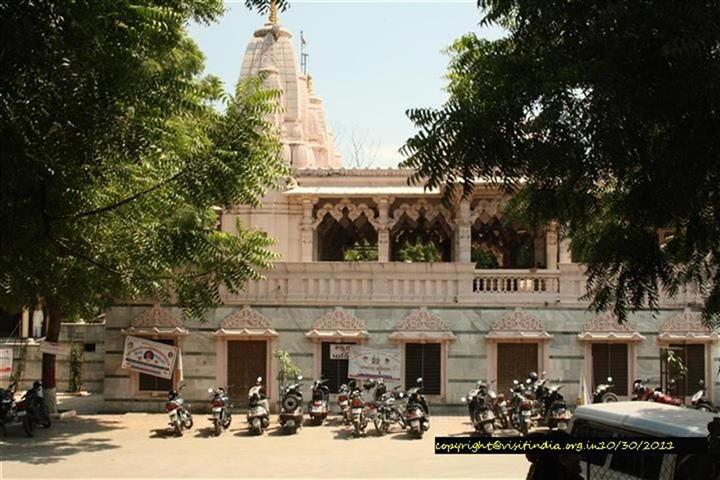
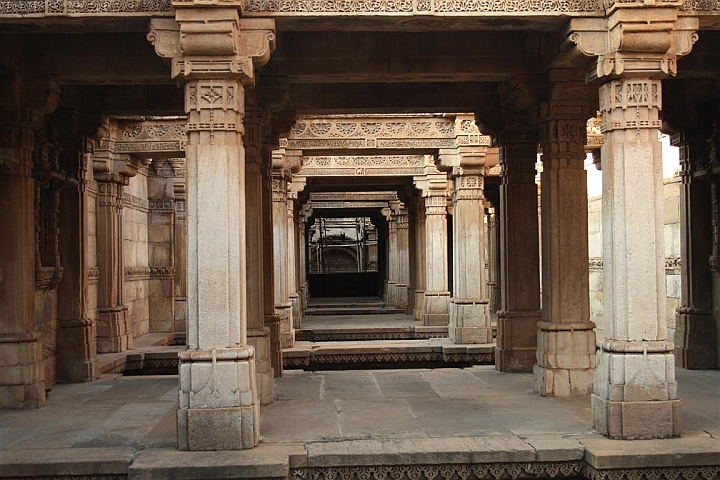
Adalaj Step well( vav) 23kms away was built in A.D 1498 by Rudra. The oblong step well runs south to north, and the entry to the vav is from the south by a stairs from all 3 sides which descend into a octogonal opening which is supported on 8 pillars. The shaft is 5 storeyed and are architecturally decorated. A panel showing the Navagrahas (9 planets) are seen and there are many sculptures like a woman churning buttermilk, femal dancers and musicians, etc.
Jhulta Minar - 2.5 kms away or the shaking minaret is a part of the Siddi Bashir and can be swayed by applying a little force to the top most arch. The craftsmen built them in such a way that they respond to vibrations and when one is shaken it is communicated to the other by a stone bridge joining the two. However one of the minar had been destroyed by a Englishman who was curious to know the reason but the mystery still lies unresolved.
Jamnagar
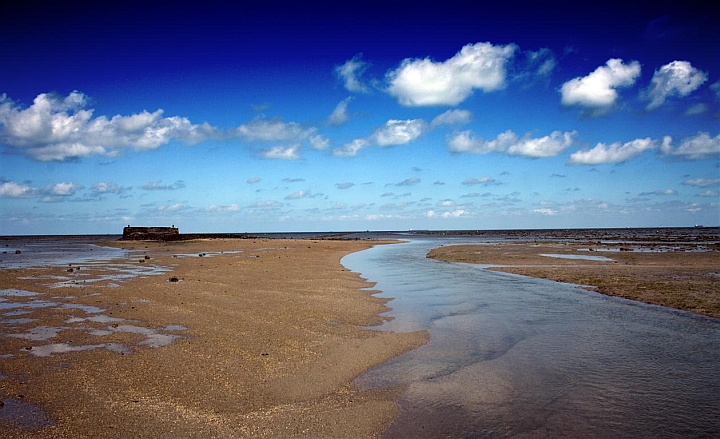
Narara Marine National park Located on the coastline of Gujarat, Jamnagar is the headquarters of the Gulf of Kutch Marine National Park & Wildlife Reserve which protects 42 islands fringed by coral reefs and mangroves. These islands and coastal areas are excellent for birding attracting a large number of wintering flocks of Crab plover, Kentish Plover, Ruddy turnstone etc.
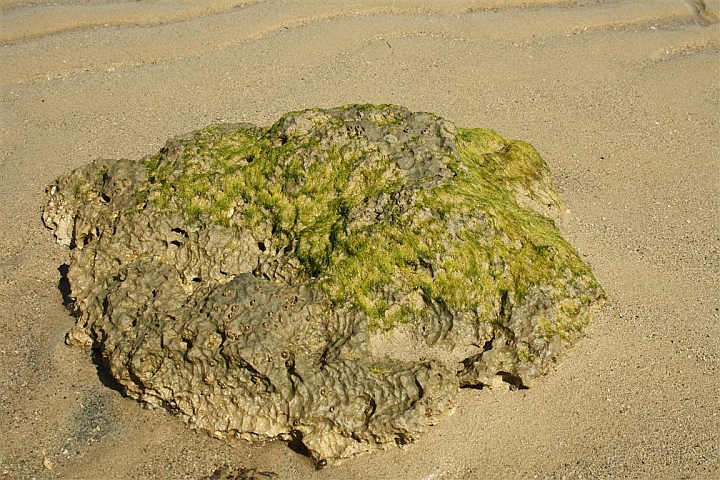
During low ride the coral reefs can be explored to see the octopus, sea hare, molluscs, echinoderms like star fish, brittle star, sea worms, sea anemone, sea fans etc.
Khijadiya Bird Sanctuary near Jamnagar is a good bird watching site. The Indian skimmer is more seen in winter & the first breeding site of the Great Crested Grebe south of the Himalaya was seen here.
Great Crested Grebe
The salt works near Jamnagar are good for Flamingoes, White pelicans, Painted stork. From Jamnagar you can also visit Ranjit Sagar dam, Sasoi Dam, Sinhan Dam and Khambaliya dam.
Jamnagar also distinguishes in tie and dye work in fabrics. It is also known for its Ayurvedic college and a Pearl Fisheries Institute.
Must see :
Bala Hanuman Mandir
The temple of Hanumanji is famous for its continous chanting of the mantra ' Sri rm, Jai Ram, Jai Ram' since August 1 1964. The temple is also mentioned in the Guinness Book of World Records.
Lakota lake
Also called Ranmal lake it has a museum and a lake where there are lots of birds. The Jamnagar Pearl Fishery is nearby the lake and that is a place to look out for.
Veraval
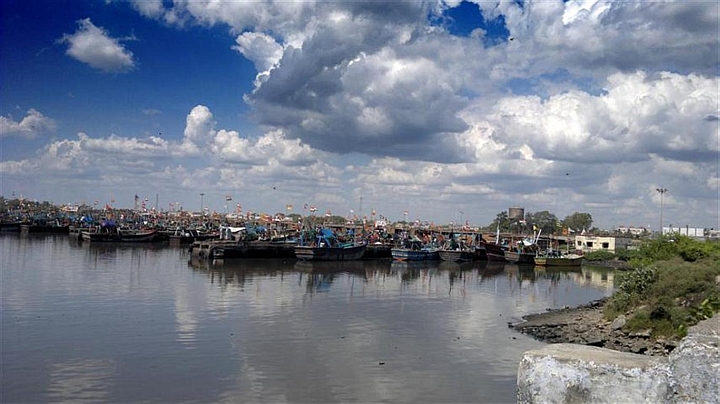
The fishing port of Veraval is known for its dhow building yard where massive hand built vessels are made. Once a port of the Nawab of Junagarh, its a place of antiquity and historic buildings.
Somnath
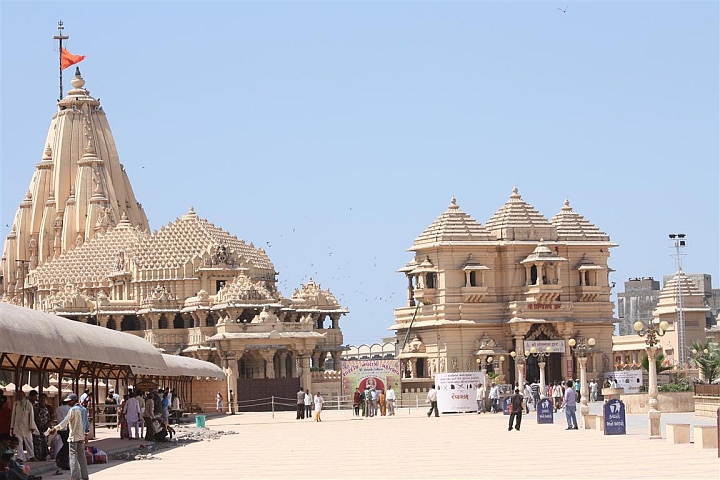
Somnath is one of the 12 jyotirlingas or the holy abode of Lord Shiva. The main temple is one of the important pilgrimage centers of Hindus and was once very rich when it was ransacked by the invaders. The Prabhas Patan Museum has interesting architectural fragments and sculptures from the ruined temples. Somnath also has Lord Krishna's cenotaph and bathing ghats at Triveni Tirth a medieval Sun Temple, The historic Ahilya Temple, Bakhla Tirth Temple where Lord Krishna is said to have met his end.
It also has beaches where the chances of spotting coastal birds like Dunlin, Curlew Sandpiper, Black & Brown headed pallas, River tarn, Ruff, Ruddy turnstone etc.
Junagarh
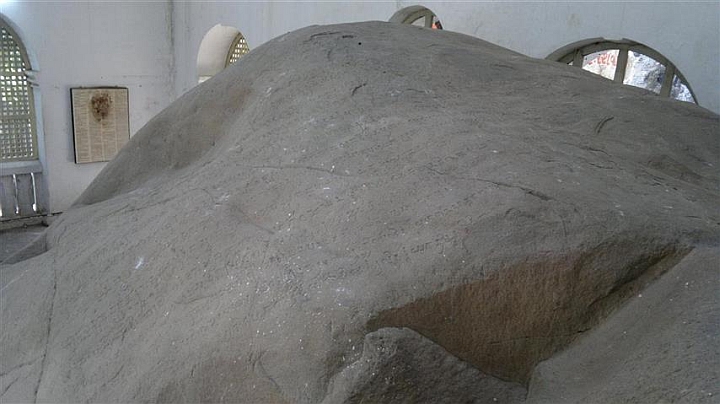
Junagarh is one of the most interesting places. Emperor Ashoka's rock edicts here date back to the 3rd century B.C and there are ancient Buddhist cave sites dating back to the Maurayan & Guptan period.
The Uparkot fort of the Chudasama Rajputs eises from a hilltop and has 11th century monuments inside the imposing battlements. Mystic poet Narasinh Mehta also is believed to have lived in the Jungarh fort.
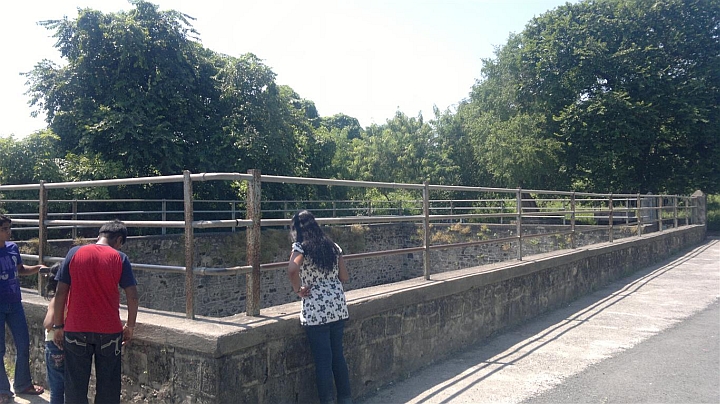
The Uperkot fort in Junagarh is a drivable fort. Ticket charges of Rs 30/- takes you through the Toran gate to a historical place where around 108 kings ruled over the old city of Jungarh which was once inside the fort premises. The total fort is 6kms but only 2 kms is drive through whereas the rest is covered by forests. From a point the whole city of present Junagarh is visible, here we can also see two cannons which are named Neelam and Manik Thop. They were made by Adaivasis from Panchadhadu metal and so they do not rust.
The Juma Masjid with the graveyards of many people. The Bodh Gufa which is said to be 2500 years old and built in 3 floors. It has the lecture hall, room for taking rest, having bath etc. The step well of Adi Chadi Baori which descents down to 160 steps, it was dug when Junagarh faced severe water crisis. But still as the situation didnt work out, the worried king sent for his astrologer who recommended the "bali of two kumaris". Two girls named Adi and Chadi who were the queen's maids sacrificed their lives and water is said to have appeared here. Hence the name Adichadi baori.
The Narayan Kua is another well which is so deep that we cannot see its bottom. It can be reached by a flight of steps, but after a certain depth the lack of oxygen makes it difficult to reach.It took 14 years to build the well and water was extracted by a huge pulley and bulls. The Ananj Godam was once where the grains were stored . They are 12 huge godowns and was well camouflaged. The Girnar mountain is visible from here. The Ambaji temple is on the top which is reached by a flisgt of 9,999 steps.
By the 19th century The Nawabs of Junagarh rose to become affluent rulers and during their reign palaces, colleges, mosques, mausoleum complexes and a quaint little Railway station came up in Jungarh all of which are worth seeing in the palace museum..
The City museum has archeological finds and manuscripts. While in Junagarh visit Sakkarbagh Zoological Park which is known for its Asiatic Lions.
Girnar
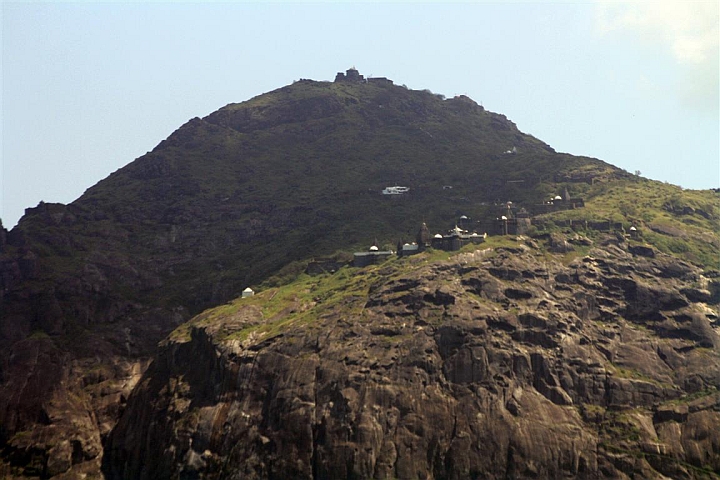
The Girnar mountains in Junagarh is one of the sacred hills of the Jains and is a cluster of 16 beautifully carved marble shrines. Starting from the Damodar Kund you climb 9,999 steps to reach the height of the mountain. The climb takes 2 hours and refreshments stalls are found on the way.
The climb takes you through Vageshwari gate Through the temple of Vageshwari mata, a new temple of 'Gayatri Pith'. The route has many scenic views and the climb can be enjoyed.
The climb takes you to Girnar mountain which is the first summit, it is also called 'uparkot'. There are many jain temples here. Naminath temple is the main temple here, then one can visit the Earasnath Vastupal Tejpal, to the north of the temples is the Bhim kund where one can take a bath. One can also see the Gaumukhi Ganga a small stream flowing from the stone mouth of a cow. Further steps bring you to the palace of Ranak Devi, Rajula caves, and then Ambaji Mata temple. After marriage newly weds come here for blessings, they believe they take the oath to live long together.
On the Eastern side of Ambaji are the mount tops of Gorakhnath, Dattatraya and Kalika. Kamandal Kund is 7 kms away from Gaumukhi Ganga and from here Bharat van and Sheshvan is seen on either sides. More trek and we reach the caves of Pathar Chatti, Pandav (where the 5 Pandavas are believd to have stayed) and Bharathari caves.
Taking a parikrama (round) of the Girnar mountain is considered to be pious. There are many dharamshalas here of which Jatashankar and Pathat Chatti are good. A great fair is held every year named the Bhavnath Mahadev fair in Junagarh in the months of January/February. Many sadhus and monks come here during the time.
Dwaraka
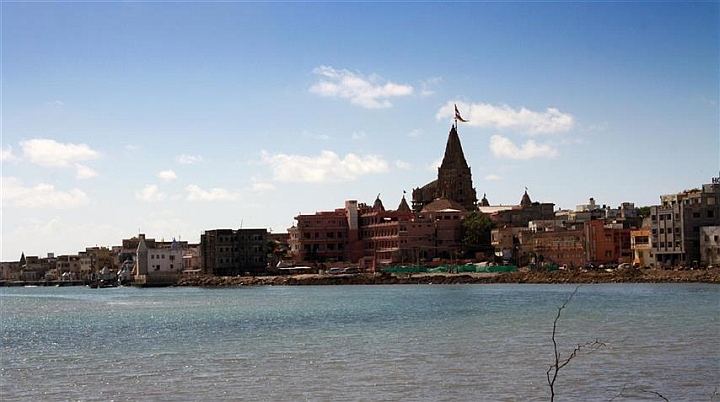
Dwaraka is the chief centre of Hindu pilgrim. It is actually difficult to understand the original place of Dwaraka because as per old belief the original Dwaraka has sunk under the sea. This Dwaraka is known as Mukhya Tirth. The most pious places in India are listed as 7 in number and they are Ayodhya, Mathura, Kashi, Haridwar, Kanchi, Ujjain and Dwaraka.
The present Dwarakdish temple is of the period of Gupta and it was repaired in the Solanki age. The familiarity of the temple spread after about 1200 years.
The temple of Ranchhodji is also known as Trilokya and was built by the grandson of Sri Krishna named Vajernabha under the help of Vishwakarma.
The temple is 42 kms high and is located on the banks of the Gomti river. The main tomb is five storeyed and it stands in 8 pillars. There are also temples of Sri Vikramji, Praduman etc. To the southern side of the temple is the Kushaewar temple, the temple store is also here and is controlled by the Sri Shankaracharya of Sharda Math.
